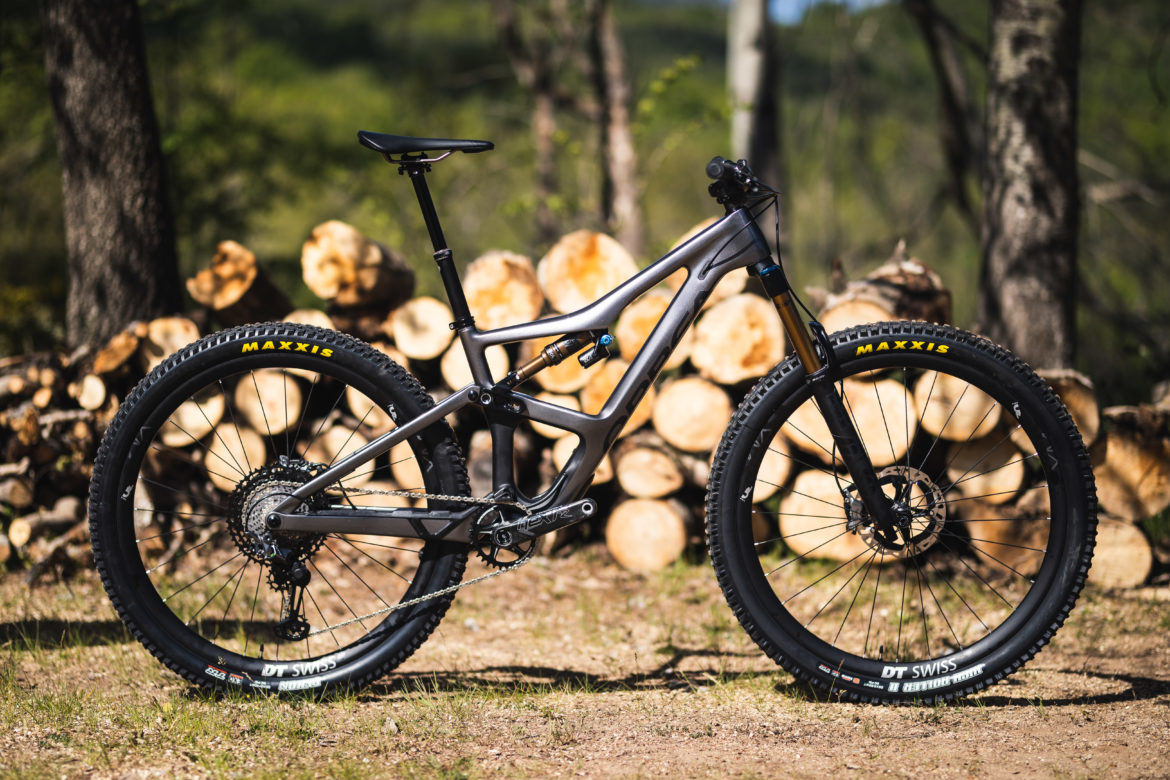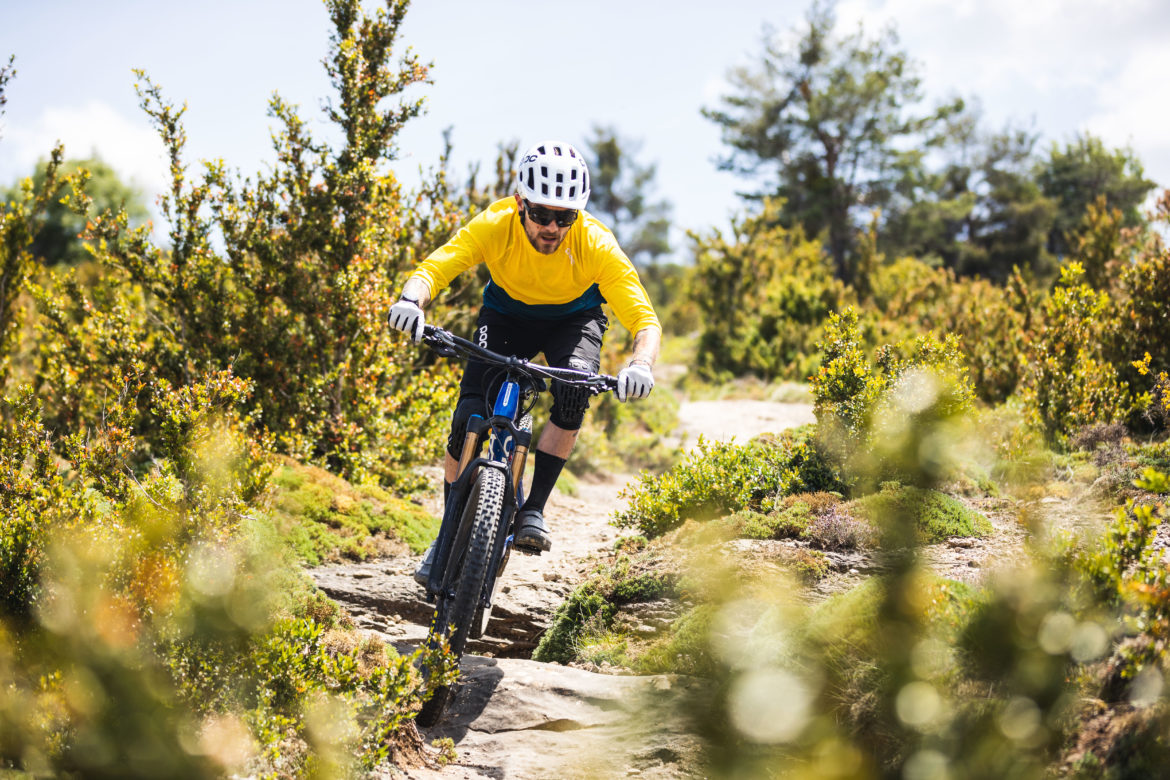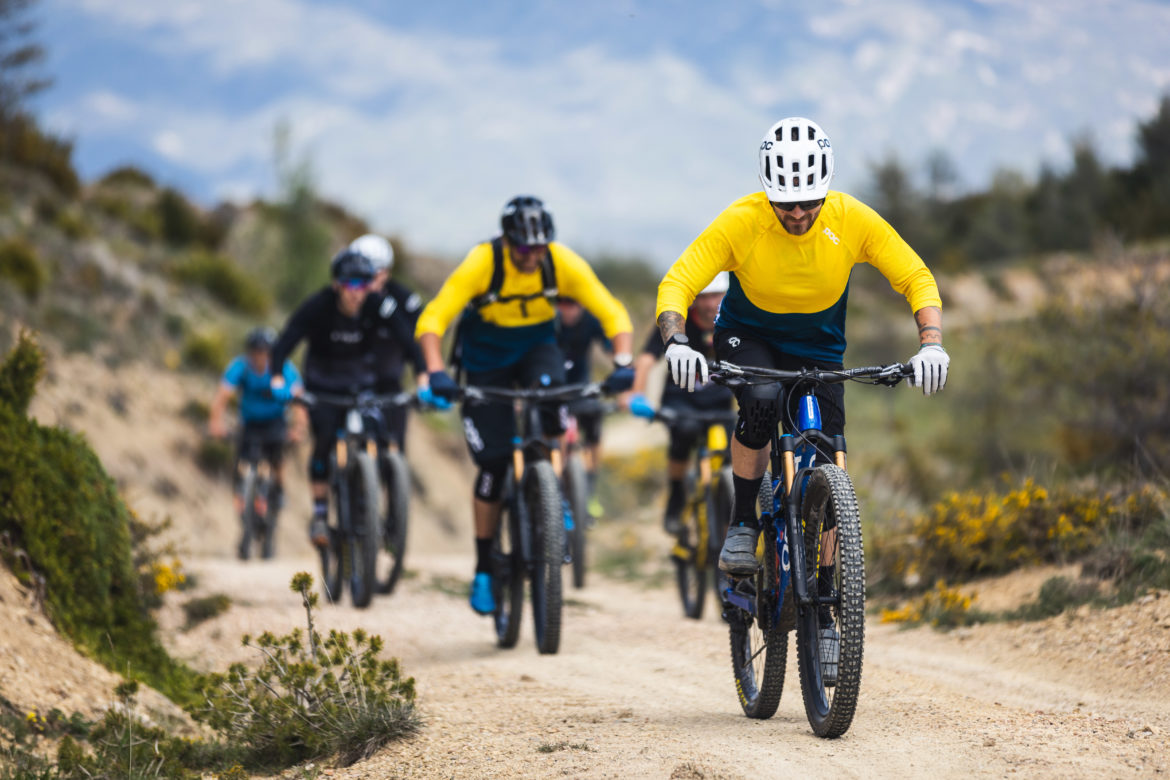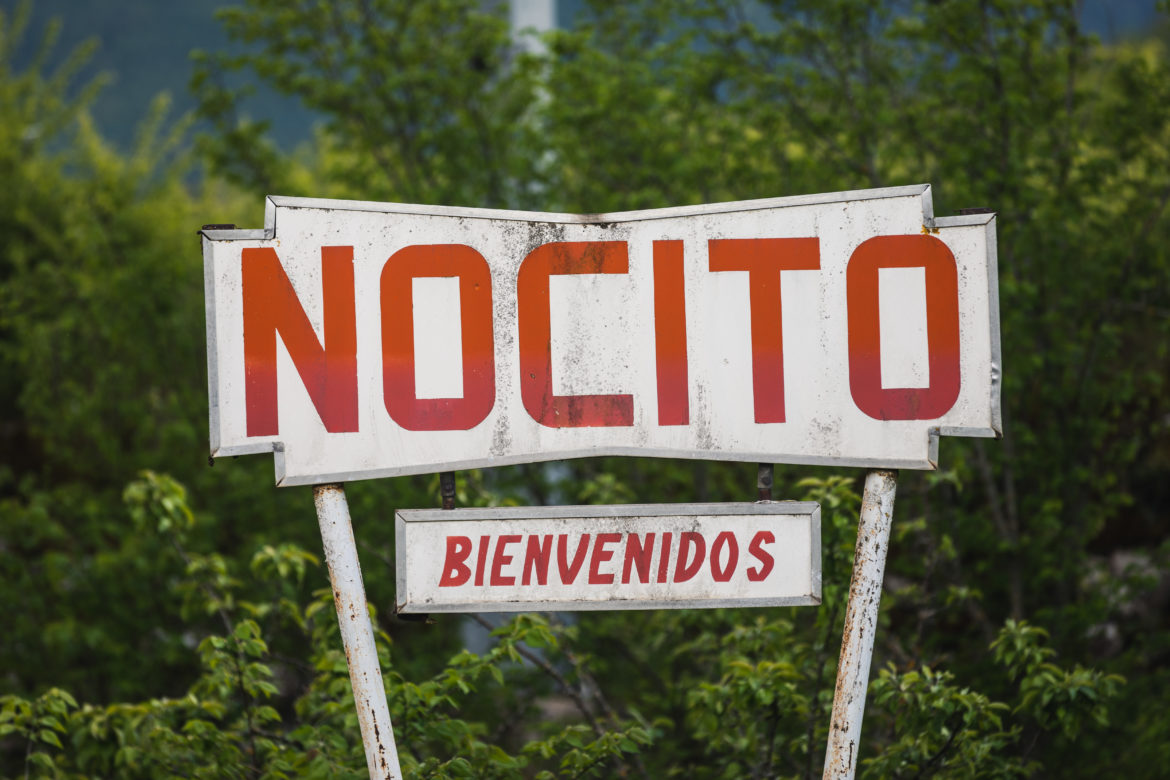
All great mountain bikes are eventually improved or replaced, and the time has come for the Orbea Occam. I recently spent a few days pedaling the updated bike through the Spanish Pyrenees, alongside the Orbea design team, and I have some stoke to share on that below. First, let’s look at a few of the modifications they made.

The previous Occam took two distinct forms. The long travel Occam AM was a 27.5″ all-mountain bike, with 150mm of travel front and rear, 425mm chainstays, and a 66.5° head tube angle. The Occam TR was a shorter travel 29er or 27.5+ bike, with 120mm of rear travel and a 130mm fork, 67.5° headtube angle, and 435mm chainstays. Both bikes used Orbea’s UFO flexing seat stay suspension system, in place of a rear pivot, which saved weight and simplified the squish a bit.

Enter the redesigned Occam. It is one bike, with 29″ hoops, an optional Fox 34 140mm or Fox 36 150mm fork, and 140mm of classic Horst-link suspension out back replacing the UFO flex system. There are no flip chips or wheel size options to fuss over. Instead, this fresh Occam is built around elements that Orbea’s engineers know will work best for modern trail riding, leaving riders to focus on the fun.

Before sag, the bike has a 66° head tube angle, 77° seat tube angle, 450mm reach on a size medium, and 440mm chainstays. A few years back these were the measurements of a proper enduro race bike, and now we can have all of that capability in a tidy trail package.

Quick spec

- Bikes are available in four carbon build options from $3,999-$7,999, and alloy versions priced between $2,999-3,499. (shop the Occam at JensonUSA)
- Sizes: S, M, L, XL
- 29″ wheels
- 140-150mm front suspension, 140mm rear
- Frame weight: 2.3kg size medium, without the shock
- Monocoque carbon frame construction, or high polished alloy
- Threaded external BB
- 180mm post mount rear brake
- New Orbea brand dropper post in 125mm, 150mm, or 170mm lengths
- Redesigned derailleur hanger can be swapped without tools
- Metric shock with 240mm stroke, coil compatible


First ride report

My first date with the redefined Occam consisted of some tight and technical shuttle laps above the secluded Pyrenees village of Nocito. I dialed in the suspension, adjusted the cockpit, and generally become acquainted with the bike while our guides from Basque MTB shared their favorite routes.

With the same 450mm reach measurement as my personal whip, the bike felt familiar and cozy early on. The massively adjustable dampers on Fox’s 36 fork and DPX2 shock made setup a pleasant process. The Occam’s seat tube is short, with a stretched insertion space to drop the post into the seat tube. I didn’t have to slam the 150mm post all the way to the collar, despite my shorter 30″ inseam.
The svelt Occam felt like a nimble, enduro-ready machine on the rocky Pyrenees tracks. Well balanced reach and chainstay measurements give the bike the confidence inspiring stance I needed for the demanding trails we rode. Several of the first day’s descents included hairpin switchbacks, and the 4-piston XT brakes and 180mm front rotor made the mandatory nose press turns possible. Despite the smoother spots that our photographer found, most of the trails around Nocito are of the slower technical variety, where a properly balanced bike can make the difference between flow and dabs. The Occam is a fantastic whip for “creating flow.”
For our second day of testing on the Occam, Orbea took a healthy bet that the herd of dirt-journalists all maintain a fairly high level of fitness. Fortunately, everyone in our crew had pedaled during the winter months. We rode for over 45 kilometers between the villages of Nocito to Boltaña, gaining 1,350m of elevation and dropping 1,900m throughout the day. The air was a cozy 25° Celsius, and with the photo stops we enjoyed over six hours between villages.

The terrain shifted along the way, from slow-tech to the ripping fast EWS tracks above Ainsa. The bike was well prepared for the faster rocky trails, handling similar to most longer travel enduro bikes that are not as fun to climb on as this trail machine. I added a couple clicks of compression to the fork to keep the front end high in its travel, as I would with any bike on these trails, and had a blast throwing myself between the trees. Orbea’s engineers tested over fifty shock tunes to find the ideal setup for the bike, and I’d say they nailed it. The Occam’s 140mm of rear suspension proved plenty squishy in the rough stuff.
My only criticism of the Occam’s descending prowess lies in the tire selection on this particular test bike. The build included a Maxxis High Roller II up front and a Rekon rear. It felt like the tires were holding the bike back slightly. Fortunately, Orbea offers a Maxxis Minion DHF/DHR combo through their bike ordering widget.
New frames like the Occam are more than a set of well-designed angles, precise suspension kinematics, and tube stiffness measurements. The component and suspension tune that fit around all of those numbers are crucial elements of a bike that rides well. Orbea nailed the suspension tune on this bike, with a well balanced and sturdy feeling platform for the finished product. The rest of the test bike build was as shred-ready as possible, with Race Face carbon bars and cranks, and Dt Swiss XM 1650 wheels that were designed around the full range of the Occam’s intended use cases.
The bike’s low weight and baller build left it well poised for our undulating six-hour tour. While ascending, the 77° seat tube angle made my job of keeping the front tire on the ground a breeze. I didn’t have any trouble with the front end wandering between stray rocks like I’ve noticed on other long travel 29″ bikes. The Occam doesn’t climb like an XC hardtail, but it goes up far better than I would expect a bike this shreddy to climb.
Several of the longer climbs we rode were on steep rock slabs with supreme grip. The Occam’s 440mm chainstay length was noticeable in these hot spots, reaching back far enough to keep me from losing out when the track turned up to a muscle-zapping pitch. I thought that I loved super short chainstays until I rode this bike. The scales of agility and overall ride stability are in harmony with this bike.

Final thoughts
Based on these two days on the Occam, I would confidently recommend the bike to a friend who is searching for one whip that they can enjoy on any trail. Apart from racing XC or downhill, it just might kill the proverbial quiver. I would suggest that the same friend order their Occam with the heavier tire options that Orbea offers, the Fox 36 150mm fork, and eventually, upgrade the rear hub to something with more immediate engagement. Apart from the freehub, all of those swaps can be selected while ordering the bike. Orbea’s paint customization program, called My-O, is artful icing on the frame cake, with thousands of color combinations to choose from. We hope to get a longer ride on the Occam 29er this fall and will share the full review in the following months.

A quick note from Orbea’s Jokin Díez about the company’s employee-owned co-op organizational model. “Orbea has been a co-op since 1969. Almost all the Orbea workers are members and that means that we share the profit we produce. We own our destiny and we work for the society. […] We invest in our area, and we are committed to our land.”





















10 Comments
Jun 24, 2019
You didn't like the XM 1650's? Which hubs do they have? I am thinking of building us some new wheels and was going to use 350 hubs. Not a fan?
Jun 24, 2019
Jun 25, 2020
Rick
Jun 25, 2020
Jul 2, 2020
Nov 11, 2020
Jun 25, 2020
Nov 11, 2020
Nov 11, 2020
Jul 2, 2020
You likely have sorted this out, but Orbea got back to me with the following reply: "The answer is positive, it's compatible"